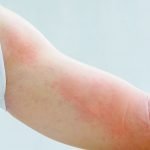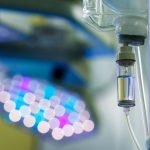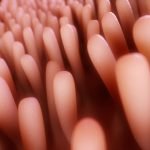Unexplained Infertility: Solving the Puzzle with Naturopathic Medicine
Shawna Darou, ND
As naturopathic doctors searching for the root cause of illness, we are in a unique position with regard to a fertility work-up, in that we are already trained to look for what is missing. “Unexplained infertility” is a diagnosis given to couples when all of the standard testing is normal but they have been unable to conceive for at least 12 months. This is a very frustrating diagnosis for patients, as they don’t know in which direction to go – whether they need expensive, invasive fertility treatments, or whether this is something that can be resolved naturally.
In my opinion, unexplained infertility simply means that no one has yet found the cause of the couple’s fertility struggles. It then becomes a question of diagnostics, including appropriate testing and a thorough history.
When most couples reach this point, they have already had a standard fertility work-up consisting of 1 month of cycle-monitoring (blood and ultrasound). This usually includes measuring their hormone levels through a cycle, watching for ovulation, basic Day 3 blood work (estradiol, LH, FSH, prolactin and TSH), a test for fallopian tube patency (sonohysterogram), and a semen analysis. In some cases (although rarely, in my experience), there has been a more thorough work-up. Again, with a diagnosis of unexplained infertility, all of these tests have come back within normal ranges.
The rest of this article will discuss some of the most common underlying causes of unexplained infertility, along with appropriate testing and assessment. I have focused only on female fertility in this article, although a similar article could certainly be written about male factors as well.
Subclinical Hypothyroidism &/or Elevated Thyroid Antibodies
Thyroid is first on my list, as it is the simplest to evaluate. For fertility, the reference ranges for thyroid-stimulating hormone (TSH) are tighter, with an optimal range of less than 2.5 mIU/L. The American Thyroid Association has made this recommendation, primarily because thyroid-stimulating hormone (TSH) levels rise in the first trimester and have been associated with miscarriage.1 In many cases, women with TSH in the 2.5-5.0 range will exhibit hypothyroid symptoms, such as low basal temperature, longer menstrual cycles with delayed ovulation, and especially weight gain, which may affect fertility. It is also important to test for the presence of thyroid antibodies (anti-thyroglobulin and anti-thyroid peroxidase antibodies). Even in cases where TSH, free T4 and free T3 are within optimal ranges, the presence of thyroid antibodies indicates an autoimmune process, which can affect fertility and increase miscarriage rates by 3-5 times.2,3 Pregnant women with subclinical hypothyroidism or the presence of thyroid antibodies also have a greater risk of preeclampsia and prenatal mortality.4
Endometriosis
Endometriosis is probably the most common cause of unexplained infertility. Unfortunately, the only accurate means of diagnosis is laparoscopic surgery, but there are other indicators which can suggest the presence of endometriosis: painful menstruation, especially if it started at menarche, painful intercourse, pelvic pain at other points of the menstrual cycle, the presence of endometriomas on ultrasound, and diarrhea at the start of menstruation, to name a few. Endometriosis causes significant inflammation in and around the uterus, which affects sperm-egg interactions and implantation in the endometrial lining. The presence of scarring and adhesions may also cause anatomical obstacles, eg, fallopian tube blockages or scarring around the ovaries.5,6
Polycystic Ovarian Syndrome
Most people are aware of the fertility struggles of women with typical polycystic ovarian syndrome (PCOS); however, there are atypical cases where the diagnosis is missed. For example, a thin woman with slightly irregular periods and moderate acne may be missed simply because of her normal body weight. Testing will still reveal multiple cysts on her ovaries, and usually a high ratio of luteinizing hormone (LH) to follicle-stimulating hormone (FSH) on Day 3 of the cycle. PCOS can create difficulty in conceiving, simply due to irregular ovulation, but also due to other factors such as: a tendency for associated thyroid imbalance,7,8 a higher likelihood of stress affecting her fertility, elevated homocysteine levels,9,10 which reduces embryo quality and fertility rates, and an increased tendency for a thickened zona pellucida (outer layer) of the eggs,11 causing difficult fertilization.
Luteal Phase Defect &/or Low Progesterone
Luteal phase defect refers to either a short luteal phase (10 or less days after ovulation), or low/unstable progesterone in the luteal phase. In either case, implantation of the embryo into the uterine lining is impaired. Progesterone can be tested with a simple blood test, mid-luteal phase, to ensure that it is within the optimal range. Luteal phase stability is best observed through basal-body temperature charting (where fluctuations in temperature can indicate fluctuations in progesterone), and can also be indicated by premenstrual spotting, which often indicates a premature decline in progesterone levels. In many cases, this issue can be addressed by supporting progesterone levels, although it can also indicate issues with abnormal follicular development, an inadequate LH surge, or other issues with the ovulation process itself.12,13
Issues With Egg Quality
We are accustomed to seeing egg-quality issues in women over 40, but in some cases the quality of the eggs changes prematurely. This may show up as abnormalities in the blood work: a slightly high Day 3 FSH (>10 mIU/mL), or a low anti-Müllerian hormone (AMH), a marker of ovarian reserve. Ovarian aging is thought to be related to a gradual decrease in the number of primordial follicles. With ovarian aging, which for most women begins more significantly after age 35, egg quality decreases, along with an increased risk of miscarriage and other abnormalities. Other signs that may point to egg-quality issues include: irregular periods, shorter cycles (eg, going from a 28-30 day cycle to a 24-26 day cycle), and having night sweats or hot flashes. Potential causes of premature ovarian aging can include frequent x-ray exposure (even in early childhood),14 radiation exposure from frequent air travel, chronic psychosocial stress,15 or autoimmunity.16 Studies have looked at the roles of mitochondrial dysfunction, declines in telomere length, and oxidative stress in reduced ovarian reserve17; these are all factors that naturopathic doctors have the tools to address using nutrition and antioxidant supplements.
Stress Hormone Imbalance
Stress is rarely a standalone cause of infertility, but it can amplify anything else that is out of balance hormonally.18 For example, high stress hormones (cortisol and DHEA) can worsen PCOS symptoms,19 shorten the luteal phase,20 cause low thyroid function,21 compromise ovarian reserve,15 and aggravate autoimmune issues.22 Markers of acute stress (measured as salivary alpha-amylase levels in one study) were shown to negatively affect the probability of conception each day during the fertile window,17 suggesting that acute stress can also affect the likelihood of conceiving within any given cycle. At the other end of the spectrum, low stress hormones due to prolonged high stress may accelerate egg-quality decline in the late 30s and early 40s.23 DHEA (dehydroepiandrosterone) is a commonly-used supplement for women with diminished ovarian reserve and premature ovarian failure, as it has a significantly positive effect on fertility rates.24,25,26 Cortisol and DHEA levels can be tested in both saliva and blood. For cortisol, though, I prefer a salivary hormone panel, which reflects both the cortisol level and rhythm throughout the day.
Autoimmune Causes of Infertility
In women with autoimmune disorders, the immune system is dysregulated and can be responsible for issues related to fertility. There are many ways autoimmune disease can affect fertility: 1) by affecting hormonal glandular function (for example with Hashimoto’s thyroiditis, hypothyroidism can lead to hyperprolactinemia and subsequent anovulation); 2) by increasing miscarriage rates (as seen in women with thyroid, anti-nuclear, or anti-phospholipid antibodies); 3) by increasing the rate of follicle or oocyte loss (as in premature ovarian failure or primary ovarian insufficiency); and 4) by interfering with normal maternal tolerance, which is required for successful embryo implantation.27,28
If there is a family history of autoimmune disorders (including thyroid disorders), presence of allergies, eczema, or asthma, or a personal history of autoimmune disorders, treating the immune system and lowering inflammation through diet and supplements are necessary to improve fertility. Testing the common autoimmune markers is a good starting place: thyroid antibodies, rheumatoid factor, and ANA (anti-nuclear antibodies). A more advanced immunological assessment can also include anti-phospholipid antibodies, anti-sperm antibodies, a Th1:Th2 cytokine assay, as well as white blood cell assessment of CD3+ (Pan T cells), Th9 CD4+ (T-helper cells), CD8+ (T-cytotoxic suppressor cells), CD19+ (B cells) and CD56+/16+ (natural killer cells).29
Closing Comments
This article was intended as an overview of some of the most common issues underlying unexplained infertility. There are, of course, many more possibilities. Other areas that have not been included in this article include: blood clotting disorders, problems with methylation (eg, MTHFR (methylenetetrahydrofolate reductase) gene mutations, and cervical fluid incompatibility or hostility.
As naturopathic doctors, we have the skills of excellent case-taking and the practice of searching for underlying causes. This combination can translate into tremendous support for those couples struggling with infertility and lacking an understanding of contributors. In almost all cases, once we understand the cause of infertility, the treatment is much clearer and simpler.
 Shawna Darou, ND, is a graduate from the Canadian College of Naturopathic Medicine. She is a member of the Ontario Association of Naturopathic Doctors, the Canadian Naturopathic Association ,and the Institute of Naturopathic Education and Research. Dr Darou is a specialist in women’s health and natural fertility, and has been treating women in her thriving downtown Toronto practice since 2004.
Shawna Darou, ND, is a graduate from the Canadian College of Naturopathic Medicine. She is a member of the Ontario Association of Naturopathic Doctors, the Canadian Naturopathic Association ,and the Institute of Naturopathic Education and Research. Dr Darou is a specialist in women’s health and natural fertility, and has been treating women in her thriving downtown Toronto practice since 2004.
References:
- Stagnaro-Green A, Abalovich M, Alexander E, et al. Guidelines of the American Thyroid Association for the diagnosis and management of thyroid disease during pregnancy and postpartum. Thyroid. 2011;21(10):1081-1125.
- Prummel MF, Wiersinga WM. Thyroid autoimmunity and miscarriage. Eur J Endocrinol. 2004;150(6):751-755.
- Stagnaro-Green A, Roman SH, Cobin RH, et al. Detection of at-risk pregnancy by means of highly sensitive assays for thyroid autoantibodies. JAMA. 1990;264(11):1422-1425.
- van den Boogaard E, Vissenberg R, Land JA, et al. Significance of (sub)clinical thyroid dysfunction and thyroid autoimmunity before conception and in early pregnancy: a systematic review. Hum Reprod Update. 2011;17(5):605-619.
- de Ziegler D, Borghese B, Chapron C. Endometriosis and infertility: pathophysiology and management. Lancet. 2010;376(9742):730-738.
- Matarese G, De Placido G, Nikas Y, Alviggi C. Pathogenesis of endometriosis: natural immunity dysfunction or autoimmune disease? Trends Mol Med. 2003;9(5):223-228.
- Janssen OE, Mehlmauer N, Hahn S, et al. High prevalence of autoimmune thyroiditis in patients with polycystic ovary syndrome. Eur J Endocrinol.2004;150(3):363-369.
- Sinha U, Sinharay K, Saha S, et al. Thyroid disorders in polycystic ovarian syndrome subjects: A tertiary hospital based cross-sectional study from Eastern India. Indian J Endocrinol Metab. 2013;17(2):304-309.
- Bayraktar F, Dereli D, Ozgen AG, Yilmaz C. Higher homocysteine levels associated with higher IR: Endocr J. 2004;51(6):601-608.
- Loverro G, Lorusso F, Mei L, et al. The plasma homocysteine levels are increased in polycystic ovarian syndrome. Gynecol Obstet Invest. 2002;53(3):157-162.
- Sher G, Davis VM, Stoess J. In Vitro Fertilization: The A.R.T. of Making Babies. New York, NY: Checkmark Books; 2005:105-108.
- Sonntag B, Ludwig M. An integrated view on the luteal phase: diagnosis and treatment in subfertility. Clin Endocrinol (Oxf). 2012;77(4):500-507.
- Yen SC, Jaffe RB, Barbieri RL. Luteal phase defects. In: Reproductive Endocrinology. 4th ed. St Louis, MO: WB Saunders; 1999:244-245.
- Verp MS. Enviromental Factors Causing Ovarian Failure in Humans. The Global Library of Women’s Medicine Web site. http://www.glowm.com/section_view/heading/Environmental%20Factors%20Causing%20Ovarian%20Failure%20in%20Humans/item/356. Accessed April 15, 2014.
- Pal L, Bevilacqua K, Santoro, NF. Chronic psychosocial stressors are detrimental to ovarian reserve: a study of infertile women. J Psychosom Obstet Gynecol. 2010;31(3):130-139.
- Premature ovarian failure: causes. Mayo Clinic Web site. http://www.mayoclinic.org/diseases-conditions/premature-ovarian-failure/basics/causes/con-20028351. Accessed April 15, 2014.
- Li Q, Geng X, Zheng W, et al. Current understanding of ovarian aging. Sci China Life Sci. 2012:55(8):659-669.
- Louis GM, Lum KJ, Sundaram R, et al. Stress reduces conception probabilities across the fertile window: evidence in support of relaxation. Fertil Steril. 2011;95(7):2184-2189.
- Tsilchorozidou T, Honour JW, Conway GS. Altered cortisol metabolism in polycystic ovary syndrome: insulin enhances 5alpha-reduction but not the elevated adrenal steroid production rates. J Clin Endocrinol Metab. 2003;88(12):5907-5913.
- Jones GS. Luteal phase defect: a review of pathophysiology. Curr Opin Obstet Gynecol. 1991;3(5):641-648.
- Pizzorno L. Thyroid. In: Jones DS, ed. Textbook of Functional Medicine. Gig Harbor, WA: Institute for Functional Medicine; 2010: 644-645.
- Wilder RL. Neuroendocrine-immune system interactions and autoimmunity. Annu Rev Immunol. 1995;13:307-338.
- Hillier SG, Tetsuka M. An anti-inflammatory role for glucocorticoids in the ovaries? J Reprod Immunol. 1998;39(1-2):21-27.
- Barad D, Gleicher N. Effect of dehydroepiandrosterone on oocyte and embryo yields, embryo grade and cell number in IVF. Hum Reprod. 2006;21(11):2845-2849.
- Mamas L, Mamas E. Premature ovarian failure and dehydroepiandrosterone. Fertil Steril. 2009;91(2):644-646.
- Gleicher N, Ryan E, Weghofer A, et al. Miscarriage rates after dehydroepiandrosterone (DHEA) supplementation in women with diminished ovarian reserve: a case control study. Reprod Biol Endocrinol. 2009;7:108.
- Sen A, Kushnir VA, Barad DH, et al. Endocrine autoimmune diseases and female infertility. Nat Rev Endocrinol. 2014;10(1):37-50.
- Haller-Kikkatalo K, Salumets A, Uibo R. Review on autoimmune reactions in female infertility: antibodies to follicle stimulating hormone. Clin Dev Immunol. 2012;2012:762541.
- Beer AE. Comprehensive Immune Testing. In: Is Your Body Baby-Friendly?: Unexplained Infertility, Miscarriage & IVF Failure – Explained. Windermere, FL: AJR Publishing; 2012:127-140.











